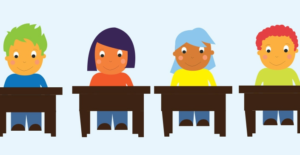United Nations General Assembly in Paris on 10 December 1948 declared Education as the fundamental human right under Universal Declaration of Human Rights in Article 26. Even after years of progress and plethora of initiatives, there are millions of girls who can’t practice their right to education.
A report from the World Bank shows that about 132 million girls in the world between the age of 6 and 17 still don’t go to school. 75 percent of these girls are adolescent. Together, this costs 15 to 30 trillion US dollars of human capital wealth. Africa has the highest rates of education exclusion out of all the countries.
The statistics show that widest gender disparities at the primary level are observed in Central Asia with an adjusted GPI of 1.27.
But the statistics from sub-Saharan Africa are alarming. For every 100 boys of primary school age out of school, 123 girls are denied the right to education.
The major reasons for girls staying out of school are poverty, child marriage, lack of clean water, sanitation, distance of schools, gender disparity, high-cost of education, child labour, and safety. We are living in 21st century, have been to the Moon, spend trillions of dollars in building and purchasing mass-destruction weapons, still not able to send our girls to the school. It’s a matter of shame that these children are deprived of their most fundamental human rights.
Why is it important to educate girls?
Education doesn’t mean just getting your girl kid in school. It contains strategic development priority, women empowerment, ensuring quality education, development of skills, safety and the girl’s contribution to the society and economy together.
The African proverb (“If you educate a man, you educate an individual. But if you educate a woman, you educate a nation”) is so true. This is because a woman has the power to transform the entire society and nation if directed on the right path.
Child marriage is one of the leading factors responsible for the low level of educational attainment across Africa and South Asian countries. It is seen that girls with at least primary and secondary education have lower chances of getting married at an early age.
Educating girls also taper the gap between men and women pay. When you give equal rights to access quality education, women actively participate in economic activities. They contribute to narrowing down the issue of gender pay gap.
Educated women also reduce the fertility rates by one third. They use contraceptive more frequently. The reduction in population growth can lead to USD 3 trillion in benefits every year.
A nation cannot progress without equal participation of women workforce in social, political, economic, and other developmental initiatives. With education, female labour’s participation increases which means faster economic growth.
Reduction in poverty is visible in countries where women and men have equal access to education. Women with little or no education are more prone to living in poverty. Education empowers women to earn basic needs while bringing the transformation in society. Without education, these women are dependent on their husband for basic needs.
An educated woman has better knowledge of healthcare and can better protect themselves from HIV, trafficking, and abuse.
Education is a potent weapon to fight against poverty and societal evils. To completely see the benefits of educating girls, we need to remove certain obstructions from their path. One of the few big ideas that we as a society can work to bring millions of girls to schools are following:
- Access to sanitation and bathroom. There are still hundreds and thousands of schools which lack proper hygienic and toilet facilities.
- Awareness among parents. Many parents especially in Africa and South-east Asia think girl child as a burden. We need “information warriors” who could change mindset of such people.
- Ensuring safety of gild students is paramount. We certainly don’t want thousands of girls to experience what Malala did.


